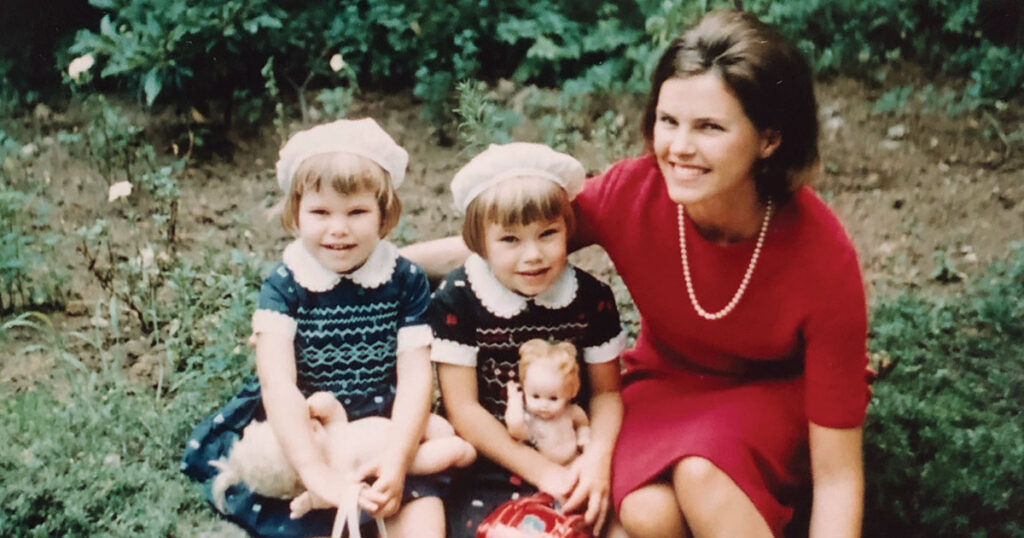
When my two little girls were very young, I made them both wear Dutch caps. I don’t remember where I found the bonnets, but I recall that they were pretty. White with some blue embroidery, they covered the ears and tied conveniently under the chin. I remember, too, that I made the girls wear them on a visit to see my old school friend Minna and her mother in Johannesburg one day.
This must have been in December, sometime in the late ’60s. In those days, my husband, my daughters, and I would fly from New York to visit my mother in South Africa during the Christmas holidays. Strangely, however, I don’t remember my husband being with us that day. Perhaps I have conveniently erased him from the picture. I know we were staying at a hotel called the Sunnyside Park, with a large garden and a pool, and that it was summertime there, of course, sunny and warm. My husband must have remained behind at the hotel.
The children would have been about three and five at the time, and we would all have dressed up to see Minna and her elegant mother, Mrs. Howe. I have a photo of myself from that period in which I am wearing a pink linen dress, with my hair brushed out on my shoulders. I suppose I had the sort of looks that one doesn’t have to think too much about. My mother used to tell both my sister and me that we were not unattractive but that we would never be as beautiful as she was. I usually dressed the girls identically, though my elder daughter sometimes protested; she would have preferred to wear pants. That day, I know I made them put on their smocked sundresses with the little sleeves like wings, brushed their fair hair carefully, and put on their Dutch caps, tying the strings firmly under their chins.
Mrs. Howe lived in one of the better suburbs of Johannesburg, in a Cape Dutch house with a gable and thatched roof and a large walled garden. Mother kept a chauffeur in those days who drove a black Jaguar, and probably I was sitting in the back of the car with my two little girls, one on either side of me. Oak trees lined the long driveway leading to the house, and I recall how the light and shade shifted in the heavy leaves, which rose and fell in the breeze. Before we entered the house, I turned to my younger girl and told her loudly and clearly that she was to be very good. I knew all too well that she was capable of taking a book off a shelf and tearing out the pages, or smashing a precious china cup on the floor.
Login to view the full article
Need to register?
Already a subscriber through The American Scholar?
Are you a Phi Beta Kappa sustaining member?
Register here
Want to subscribe?
Print subscribers get access to our entire website Subscribe here
You can also just subscribe to our website for $9.99. Subscribe here


